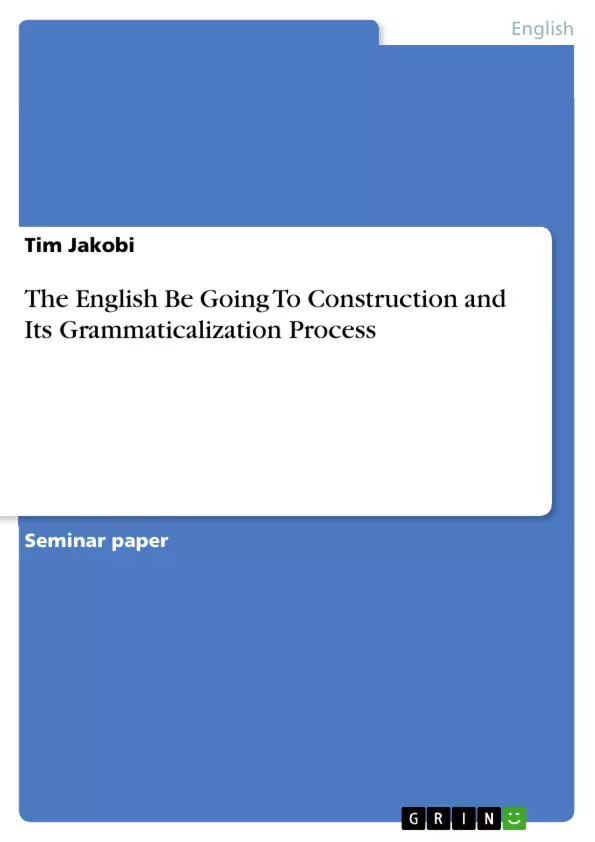Grammaticalization is one of the very fuzzy areas in linguistic research and the Englishgo-futurecertainly is no exception in this field. There are a lot of publications dealing with this subject, among them the best-known works of Heine, Traugott, Hopper and Sweetser, some of which are also used as references in this paper. Usually, the issue of thegoing tofuture construction only makes up a small part in these publications. However, I will concentrate exclusively on this kind of future of the English language. In my opinion, it is most useful to trace the form back to its origins and follow its development chronologically over the course of time. Furthermore, this seems to be the most appropriate method to deal with the subject, as one can hardly pin down exact points in time at which a certain grammaticalization process can be claimed to have started off, as it is a rather linear development, which will be shown throughout the paper. A huge problem, as in any field of linguistic research dealing also with Old and Middle English, lies in the lack of data. As there is only a small amount of written evidence to draw from, results and theories based on this data are always a very tentative issue and in no way absolute, a fact one should always keep in mind when dealing with these subjects.
Inhaltsverzeichnis (Table of Contents)
- Introduction
- Through the Ages - The Grammaticalization Process of the Be Going To Construction
- Old English - The Roots of Go and the Progressive Form
- Middle English - The Next Stage
- Early Modern English - Early Grammaticalization
- Modern English
- Internal vs. External Factors - Possible Explanations for this Grammaticalization Process
- Today's Use of the Andative Future
- Conclusions
Zielsetzung und Themenschwerpunkte (Objectives and Key Themes)
This paper examines the development of the "be going to" construction in English, tracing its evolution from Old English to Modern English. It aims to provide a detailed chronological account of the grammaticalization process, focusing on the role of the verb "go" in the construction's semantic shift from spatial movement to temporal reference. The paper explores the internal and external factors that may have influenced this linguistic change.
- The grammaticalization process of the be going to construction in English
- The semantic shift of "go" from spatial movement to temporal reference
- The influence of internal and external factors on grammaticalization
- The historical development of the progressive form in English
- The emergence of the andative future in English
Zusammenfassung der Kapitel (Chapter Summaries)
The introductory chapter delves into the topic of grammaticalization, highlighting the complexity and challenges of studying the English go-future construction. It establishes the scope of the paper and clarifies its methodology, focusing on a diachronic approach.
Chapter 2 traces the historical development of the be going to construction from its Old English roots. It examines the origins of the verb "go" and its relationship to the modern progressive form, exploring the various theories regarding their development and the available data.
Schlüsselwörter (Keywords)
This paper focuses on the grammaticalization of the English be going to construction, also known as the andative future or go-future. Key terms and concepts explored include Old English, Middle English, Early Modern English, Modern English, grammaticalization, semantic shift, spatial movement, temporal reference, progressive form, andative future, internal factors, external factors, historical linguistics, and diachronic analysis. The paper delves into the origins and development of the construction, examining its linguistic evolution through time.
- Quote paper
- Tim Jakobi (Author), 2004, The English Be Going To Construction and Its Grammaticalization Process, Munich, GRIN Verlag, https://www.grin.com/document/52508



